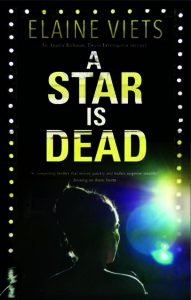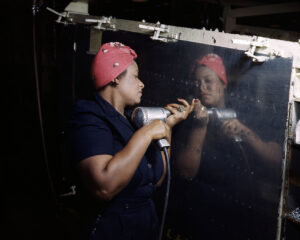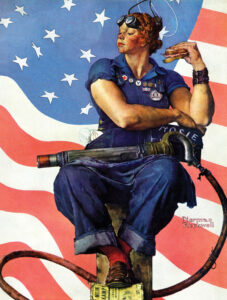New York Times bestsellers. Pulitzer Prize nominees and winners. Man Booker short-listed books and winners. Books taught in high schools and colleges. And books fresh off those coveted “Best of” lists.
I want all these honors for my novels.
But what do these literary successes have in common?
Cliches.
Cliches that would embarrass novice novelists.
For a project for The Pudding, an online magazine, Erin Davis “selected 2,000 books spanning Pulitzer-winning classics to pulpy bestsellers (getting myself banned from the library—twice) and ran them through a parser that identified sentences mentioning body parts. I then extracted the owner of the body parts and any adjectives describing them.”
Her results should put every writer on alert. We’re cranking out cliches.
Here are some of Erin Davis’ findings:
“Hair is twice as likely to be mentioned for women characters than for men . . . society values different things about men and women. For example, there is a long literary, historical, and cultural tradition of valuing a woman’s hair: the Bible calls hair a woman’s crowning glory.
“In other cases, that gaze is more lascivious,” Davis writes. “Consider this litany of woman-skewed body parts: hip, belly, waist, and thigh.”
But when it comes to men, we writers typically – stereotypically, to be exact – describe men’s strength and power. “Body parts such as fist, knuckles, chest, and jaw sketch an image of a commanding and intimidating presence,” Davis says, “as empty of nuance as the soft, sexy image of women.”
Women’s faces are eight times more likely to be “lovely” or “pretty.” Men are plain old “handsome.”
Female bodies are more likely to be “naked,” “young” and “slender.” Men are sixteen times more likely to be described as “powerful.”
Women’s legs are bare and long – especially long. Sorry, guys. Your gams are simply “hairy,” a pedestrian description, if you’ll pardon the pun, and a great offense. I live near the beach, and can testify that many men have shapely bare legs.
As for shoulders, once again, the ladies are nekkid and “white.” Men’s shoulders are “heavy” and “broad.” What a shame those hunky male shoulders are covered up.
And women’s skin? Alas, it’s not much different than our shoulders: it’s described as “white,” “pale,” “smooth,” or “dark.” Men’s skin is reduced to either “black” or “yellow.” Fortunately, both sexes have “warm” skin.
What this project shows is how many authors rely on lazy writing. When our fingers are flying over the keys, it’s easy to grab a reliable cliche. Everyone does that.
Here’s my favorite paragraph from Davis’ article: “In real life, women are obviously more dimensional than soft, sexual objects. Men are more complex than muscular lunkheads. We should expect that same nuance of the characters in the books we read.”
If we’re interested in more thoughtful descriptions of lovers for our novels, check your family photos. Remember the relatives who were – or are – madly in love. Are the women all long-haired beauties and the men strong and handsome? Or are there some startling mismatches.
Consider your sizzling hot Aunt Anna who married geeky Uncle Walter, the guy with the weak chin. They’re still living happily ever after. And what about sexy Cousin Jack? Why did he fall for flat-chested Verna, with the thick glasses and bird legs? Why are they still in love twenty-five years later?
For strong women, I give your Rosie the Riveter, who inspired World War II women to work in factories and help their country. Here’s one Rosie, her crowning glory wrapped in a red bandana, working on an aircraft.
Norman Rockwell’s Rosie is eating a sandwich. She may have white shoulders, but her bare arms are definitely muscular.
As for strong men, here’s a hero who defies the standard cliches: the British spy Frank Foley.
Frank was short, pot-bellied, and wore owlish glasses. He looked exactly like his cover profession – passport control officer for the British embassy in Berlin. History says, “Foley bent the rules and helped thousands of Jewish families escape from Nazi Germany after Kristallnacht and before the outbreak of the Second World War.”
Forget the James Bond tux. Foley, the quintescential clerk, saved ten thousand people.
Write on – right past the cliches.
####################################################################
 A Star Is Dead, my fourth Angela Richman, Death Investigator mystery, is “skillfully plotted… Witty dialogue and well-defined characters, including plucky and intelligent Angela, lift this wry look at the trappings of celebrity. Fans and newcomers alike will be pleased” – Publishers Weekly. Buy it today: https://tinyurl.com/yc6fnysb
A Star Is Dead, my fourth Angela Richman, Death Investigator mystery, is “skillfully plotted… Witty dialogue and well-defined characters, including plucky and intelligent Angela, lift this wry look at the trappings of celebrity. Fans and newcomers alike will be pleased” – Publishers Weekly. Buy it today: https://tinyurl.com/yc6fnysb




Who could have predicted that the fundamentally irrational view of Identity Politics would creep into literary analysis?
“Cliches.
Cliches that would embarrass novice novelists.
”
That’s not the claim Identitarians make.
The issue is not framed as that of literary efficacity, but as a moral issue, of perpetuating misconceptions and alleged oppression.
”
For a project for The Pudding, an online magazine, Erin Davis “selected 2,000 books spanning Pulitzer-winning classics to pulpy bestsellers (getting myself banned from the library—twice) and ran them through a parser that identified sentences mentioning body parts. I then extracted the owner of the body parts and any adjectives describing them.
Her results should put every writer on alert. We’re cranking out cliches.
Here are some of Erin Davis’ findings:
“Hair is twice as likely to be mentioned for women characters than for men . . . society values different things about men and women. For example, there is a long literary, historical, and cultural tradition of valuing a woman’s hair: the Bible calls hair a woman’s crowning glory.”
And what is supposed to be the problem?
”
“In other cases, that gaze is more lascivious,” Davis writes. “Consider this litany of woman-skewed body parts: hip, belly, waist, and thigh.”
But when it comes to men, we writers typically – stereotypically, to be exact – describe men’s strength and power. “Body parts such as fist, knuckles, chest, and jaw sketch an image of a commanding and intimidating presence,” Davis says, “as empty of nuance as the soft, sexy image of women.””
For the Identitarian, the male gaze is inherently problematic. Having it on the page rubs them the wrong way. If only biological fats wouldn’t get in the way.
”
Women’s faces are eight times more likely to be “lovely” or “pretty.”
”
God forbid male authors have their heterosexual protagonists praising female faces. Apparently, it’s been decreed a no-no.
” Men are plain old “handsome.”
Female bodies are more likely to be “naked,” “young” and “slender.” Men are sixteen times more likely to be described as “powerful.””
It’s a known fact male bodies and female bodies are interchangeable and virtually undistinguishable.
”
Women’s legs are bare and long – especially long. Sorry, guys. Your gams are simply “hairy,” a pedestrian description, if you’ll pardon the pun, and a great offense. I live near the beach, and can testify that many men have shapely bare legs.
As for shoulders, once again, the ladies are nekkid and “white.” Men’s shoulders are “heavy” and “broad.” What a shame those hunky male shoulders are covered up.
”
Who are the protagonists in these novels? When were they written?
None of that matters in the least, apparently.
I sense an awkward lack of familiarity with how heterosexual males often tend to project ideals onto their love interests.
Literature of the past centuries obviously got it wrong, but luckily, contemporary critics are here to help adjust the situation and help enact the earthly paradise.
Please follow along.
“And women’s skin? Alas, it’s not much different than our shoulders: it’s described as “white,” “pale,” “smooth,” or “dark.” Men’s skin is reduced to either “black” or “yellow.” Fortunately, both sexes have “warm” skin.
What this project shows is how many authors rely on lazy writing.
”
I don’t think that’s what it’s trying to show,
” When our fingers are flying over the keys, it’s easy to grab a reliable cliche. Everyone does that.
Here’s my favorite paragraph from Davis’ article: “In real life, women are obviously more dimensional than soft, sexual objects. ”
The intesectioanlist’s view is that sexualization is a problem in and of itself. What an interesting return to Victorian prudishness, couched, of course, in the lingo of the liberator.
“Men are more complex than muscular lunkheads. We should expect that same nuance of the characters in the books we read.”
No. The author should do whatever they want to and flush any ideologically-driven attempts to limit, direct or censor their work down the toilet, where they so endearingly belong.
”
If we’re interested in more thoughtful descriptions of lovers for our novels, check your family photos. Remember the relatives who were – or are – madly in love. Are the women all long-haired beauties and the men strong and handsome? Or are there some startling mismatches.”
A stroll down the block will probably tell you most people are physically unremarkable. If realism is what you’re striving for, be ready for plainness though and through.
But if plainness is already readily available to the reader just by going for a walk, why would they spend precious time and money on a novel to get it second hand?
”
Consider your sizzling hot Aunt Anna who married geeky Uncle Walter, the guy with the weak chin. They’re still living happily ever after. And what about sexy Cousin Jack? Why did he fall for flat-chested Verna, with the thick glasses and bird legs? Why are they still in love twenty-five years later?
For strong women, I give your Rosie the Riveter, who inspired World War II women to work in factories and help their country. Here’s one Rosie, her crowning glory wrapped in a red bandana, working on an aircraft.
”
So the New Stereotype du jour is the “Strong female”?
Oh, I see now.
It’s not that stereotypes are bad, just that the so-deemed wrong kind is.
Roger.
“Norman Rockwell’s Rosie is eating a sandwich. She may have white shoulders, but her bare arms are definitely muscular.
”
Yes, muscular women is the token I look for in a contemporary novel, the thing that just has me opening my wallet and shelling out the dough.
To be clear, there’s nothing inherently wrong about muscular female characters, just as there is nothing inherently right about them.
”
As for strong men, here’s a hero who defies the standard cliches: the British spy Frank Foley.
Frank was short, pot-bellied, and wore owlish glasses. He looked exactly like his cover profession – passport control officer for the British embassy in Berlin. History says, “Foley bent the rules and helped thousands of Jewish families escape from Nazi Germany after Kristallnacht and before the outbreak of the Second World War.”
Forget the James Bond tux. Foley, the quintescential clerk, saved ten thousand people.
Write on – right past the cliches.”
Talented writers have been doing this for ever. They did so out of love for the craft, not because the old clichés had been replaced by a fresh wave of mandatory new ones.
I have to wonder how many copies will sell of the next novel peopled by a short, balding, potbellied, bespectacled male lead and his partner, a broad-shouldered, strong woman with a square, solid jaw and Popeye forearms. And who will write it. (grin)
Popeye and Olive Oyl have been doing well for decades, Harvey, and neither one are beautifies. (grinning back)
ARRGH! I mean “beauties.” There’s never an editor when you need one.
Remember international sensation Fabio, the blond with a six-pack model of billions of romance covers? “Romantic Times,” the review magazine, had a funny cartoon of a bookstore window that’s titled, “What if romance was about reality?” The book featured has a middle-aged, balding fat dude on a book called FLABIO. Beside it is a poster that says, “Over TWO sold.”
I love that! And I do remember the fuss over Fabio. Poor guy lost his looks when a goose hit him in the face. Reality is far weirder than fiction.
The goose attack didn’t hurt Fabio’s looks. A slight scratch. His career was already petering out as the historical romance lines he modeled for were shutting down or downsizing drastically. Other historical lines found one particular model who was on most of the covers and was used for promo at reader events. He was also so dang ubiquitous that seeing him on a cover no longer meant an automatic sale so he was too expensive. He just faded out of sight.
Interesting findings, Elaine.
Since all the books studied were bestsellers and/or award winners, the readers who bought them evidently weren’t turned off by cliches.
As a reader, cliches bore me. But I suspect that’s b/c I’m viewing stories through a writer’s lens, always striving to find fresh new ways to describe characters and make then unique.
But looking at books from the POV of a consumer/reader, the vast majority are not that concerned about craft. They simply want a good story.
Hence the ongoing debate between popular appeal vs. artistic merit, commercial vs. literary.
Do literary books become bestsellers? Sometimes. Do commercial bestsellers receive critical acclaim? Not often.
As writers, we need to ask ourselves: Who is my target audience? What do *they* want?
Good points, Debbie. But I do feel we need to watch out for cliches. I just got my copyedits back for my latest book, DEATH GRIP, due out in December in the UK, and my editor gently reminded me that I had too many blondes and I needed to change some descriptions of my minor characters. She was right.
Then there’s the high school student who said, “What’s the big deal about Shakespeare? His plays are filled with cliches.”
I don’t mind a few shortcuts. In fact, some ‘beautiful’ descriptions will slow the pace for me. But yes, you have to avoid repeating the same sorts of descriptions for too many characters.
Exactly, Terri. This is a reminder for writers. Which everyone, including me, needs.
Shakespeare created those “cliches.” The vibrant new words and descriptions are all from his fertile brain. (English major shakes her head sadly.)
I join you in your sorrow, Marilyn.
Now, I must confess. I hate reading Shakespeare. It makes no sense to me. I (mostly) enjoy seeing it performed, but it’s a lot of work. The most notable exception for me is Kenneth Branagh’s “Henry V”.
Gee, I would hope readers could look deeper into our characterization than surface traits like “long hair” or “muscular physique.” I respectfully disagree that social norms are cliche. Perhaps if we ONLY used surface traits to describe our characters, then yes, I agree. But all these books were bestsellers and award-winners. Thus, I gotta believe the authors worked to fully round out their characters as the stories unfolded.
Good post, Elaine. Copy and paste-worthy for me.
Having said that, I prefer my heroes and heroines, anti-heroes and anti-heroines, bad guys and girls, and even minors, to be real people. So if they’re beautiful or ugly (of course, purely subjective), kind or mean, liars and thieves, or moral and upright, they must be realistically drawn. Good guys must have quirky failings, and bad guys must be unexpectedly good. If it takes a cliche to describe that, then bring it on. It won’t bother me.
However *ahem*…I love it when the author describes said characters in an unexpected, fresh way. Instead of saying he’s muscular, have him pick up a suitcase that no normal man on God’s green earth could manage; or, his lady’s eyes sparked red like the sunset…or something better than that.
My editor constantly encourages me to “come up with descriptions” that go off the beaten cliche path. As a reader, it’s fun to read one, and as an author, it’s even more fun to write one.
Hooray for you and your editor, Deb. It takes more work to “go off the beaten cliche path,” but the rewards are worth it.
Isn’t literature often a mirror to society? Perhaps our lives are one big cliche. Just before reading this blog post, I read the NYT review of Entitled, so I have those theories sitting in the back of my brain as I read this blog post and I have no surprise at all….Sigh
Writers can and shoulder hold a mirror to society, Alec, but it’s up to us what we choose to reflect.
Oh Deb, you’ve made me remember the times I’ve warned some guy of a heavy bag or a hard to open container, only to have them demonstrate how easily they could take care of it. 😉 Yes, showing is more interesting. I did once pick up a guy much larger than I, body mechanics and he provoked me . . . the ed. department caught it on film.
I appreciate fresh turns of phrase (and Shakespeare’s were the freshest) and the aspects of real character that make me CARE. Also, especially now, I am grateful for humorous turns. I need the laughter. Thanks for the work of crafting well.
The samples and the results are totally useless because the creator of the study assumes that narrative has never changed, all character descriptions have equal value, and that different genres have the same descriptive expectations. None of these are true, and I’ll be happy to beat anyone to death with my Nerf noodle of academic knowledge to prove any of the above.
That said, yes, most of us need to up our descriptive game and describe people as people instead of gender or ethnic stereotypes. Writers of different genres would do well to study some of the best romance writers like Nora Roberts/JD Robb with their five-senses immersive craft of everything, not just character descriptions.
I sidestep much of this by including very little physical description for any of my characters. I’ve mentioned here before that in 13 books, I have never once described Jonathan Grave. We know his thoughts, his feelings, his prejudices, etc. but I’ve never described what he looks like–beyond impossibly blue eyes and a smile that he can weaponize when he needs to.
We know that Jonathan’s homicidal best friend, Boxers, is huge (“Holy shit, you brought Sasquatch!”), but I’ve never given him a description beyond that. Interestingly, even though his real name is Brian Van de Muelebroecke–as European as you can get–the vast majority of readers believe he is black. Some refuse to believe he’s white, even after I tell them.
Here’s how I recently described a teenage character: Skinny and full of attitude, he’d be handsome one day, after he grew into his hands and feet. That’s it. We subsequently spend a lot of time in his head, and I’m confident that every reader will fill in the physical description with someone they know.
I think that detailed descriptions of people are wasted ink, unless a specific description pays off. In HELLFIRE, for example, the fact that a character has a port wine stain on his face is important to the plot later. Otherwise, I think that readers will fill in their own blanks.
A reader once asked Karin Slaughter on Facebook what Will Trent looked like. Her response: Exactly how you picture him.
Good examples, John.
A tip I give to newer writers is to “cast” secondary roles, particularly speaking roles. Doris Roberts, pre-EVERYONE LOVES RAYMOND, was my over-the-top secretary for one hero. Sandra Gould, the second Gladys Kravitz on BEWITCHED, was the neurotic medium for a few pivital scenes in another. They gave me the voices, mannerisms, and looks to make these characters pop in my head and on the page. Casting is a good way to avoid a stick character for small roles, and the character is in your and the reader’s head when they appear in another scene.
Good advice, Marilynn. I plan to steal it for my next Zoom lecture.
Generally speaking, I like my descriptions to reveal more about the viewpoint character than the person being described, since I’m writing in First-Person Snark.
Also, I think that the books in question are even more skewed in other areas than those listed. How many ugly babies make an appearance, for example? Or despicable characters who are voracious readers of the book’s own genre?
First person snark — nice phrase, Robert. I also write in first person, and describing a character often says more about my protagonist.